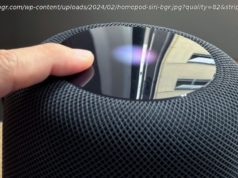Ethereum (ETH) has risen to become hugely popular in the cryptocurrency world over a relatively short period of time. After first appearing on the radar screens of miners earlier this year, with valuations surpassing the $400 mark in June, ETH pricing is now hovering…
Mining enthusiasts have built their own dedicated machines for mining Ether, with many choosing mid-range NVIDIA and AMD hardware to get the most bang for the buck and performance-per-watt. As we mentioned in our Ethereum Mining Optimization Guide, we found that the NVIDIA GeForce GTX 1070 offers a relatively high hash rate, while keeping costly power draw at bay, though AMD cards are also regular enthusiast favorites for their relatively high hash rates too.
However, now that Vega has officially burst onto the scene lighting-up game benchmark graphs, everyone is also keen to know how the Radeon RX Vega 56 and Vega 64 perform while mining, compared to their counterparts. AMD didn’ t give us much time to benchmark Radeon RX Vega, however, we wanted to provide a little taste of what Ethereum miners can expect, so here’s a preview of what we found when it comes to mining performance.
First off, let’s take a look at total system power consumption when mining with Vega:
As we reported in our full Radeon RX Vega review, power draw for Vega 56 and Vega 64 is quite a bit higher than their GeForce GTX 10-Series competitors in gaming benchmarks. This trend follows Vega over to mining operations as well.
But let’s look at hash rates for Radeon RX Vega 56 and Radeon Vega 64 compared to their peers. The following tests were conducted with Nice Hash, specifically benchmarking Dagger Hishmoto processing throughput, Ethereum’s specific algorithm.
Both the Radeon RX Vega 56 and the Vega 64 slot in below the GTX 1080 and the GTX 1070 FE (optimized) at 29.3 and 30.37 MH/s respectively. Vega 56 appears to be far more power-efficient for Ether mining compared to Vega 64, with not that much of a performance variance (at least currently) between it and AMD’s top-end Vega card. Peak hash rates are represented in the graph using the Turbo setting. These numbers are very preliminary and our results did have a fair amount of variability from run to run with occasional crashes as well.
Also keep in mind that our mining power numbers are lower than our gaming power numbers from the review because the CPU is completely idle when mining; not so when gaming.
If these performance numbers are a bit disappointing, rumor has it that AMD may have an update available some time in the future that opens these cards up performance-wise and unlocks additional mining headroom. However, the company wanted to ensure that gamers were taken care of first and that cards were available to purchase for gamers, rather than being snapped up my miners. And given that AMD’s GPUs have traditionally had very strong compute performance compared to their NVIDIA counterparts (hence miners raiding Radeon RX 4xx/5xx supplies) , it’s quite possible that we may see a sizable leap in performance when AMD is able to further optimize drivers and card firmware.
As for the rumors suggesting that the Radeon RX Vega 64 would offer hash rates approaching 100 MH/sec; unfortunately, our answer to those reports for now is a firm no .
In case you haven’ t already taken a look, be sure to read Dave’s excellent review of the Radeon RX Vega 56 and Vega 64. While we won’ t give anything away here, these two cards firmly put AMD back in the game with regards to high-end gaming performance compared to NVIDIA’s now year-old Pascal architecture.






